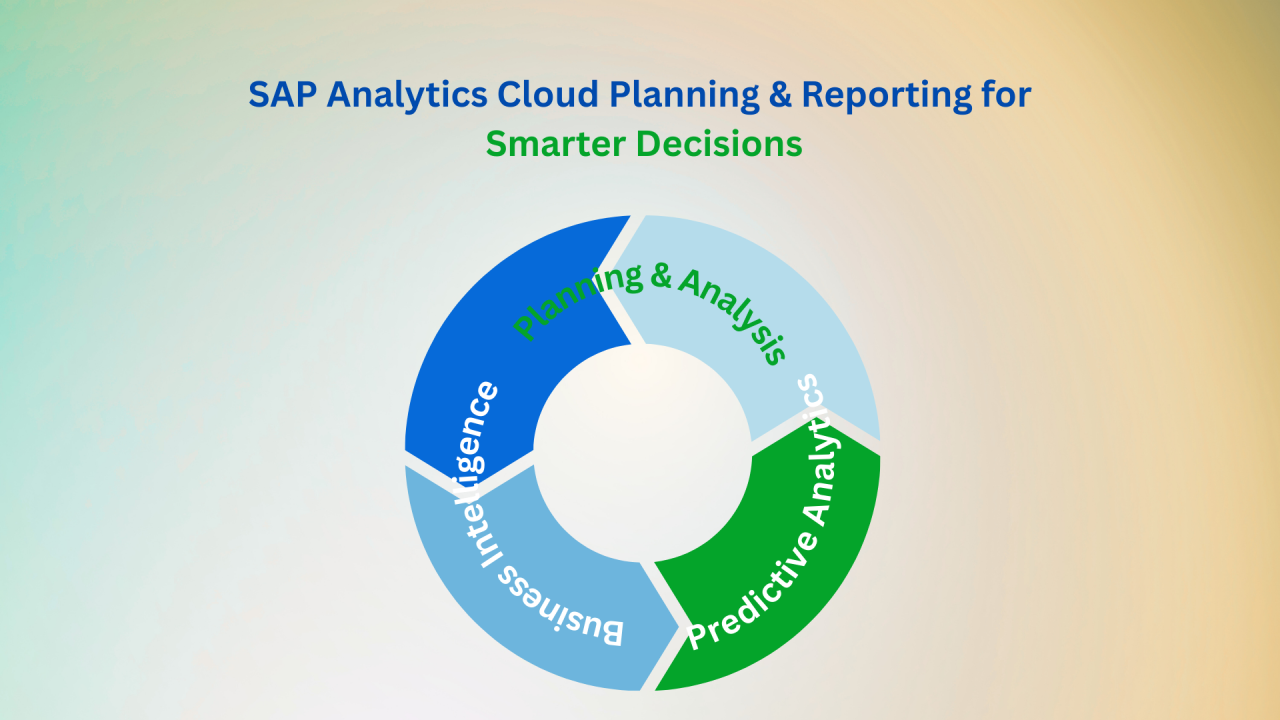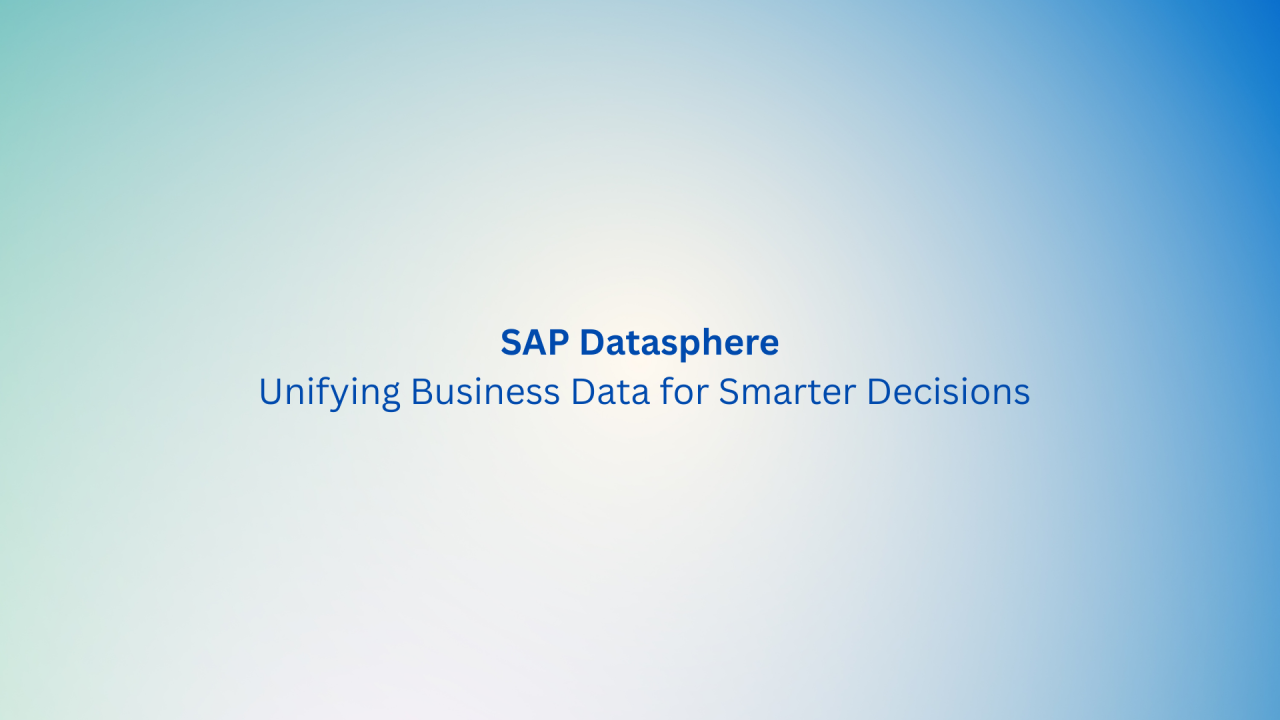In our previous newsletter, we commenced our exploration of the SAP Datasphere. Today, we’re delving deeper into the realm of data warehousing, focusing on SAP’s approach and its rich array of capabilities. Join us as we uncover the intricacies of SAP’s data warehouse solutions and discover how they can empower your organization to unlock new insights and drive informed decision-making.
Data warehousing strategy of SAP
SAP Data Warehousing continually introduces advancements through offerings like SAP Datasphere and SAP BW/4HANA. SAP Datasphere represents the latest addition to SAP’s data warehousing suite, built on the SAP HANA Cloud platform. Embracing a Data Warehouse as a Service (DWaaS) model, it operates within the public cloud environment with frequent updates and releases. SAP Datasphere is explained by several key characteristics.
- Integrate: The approach emphasizes broad connectivity and sophisticated data visualization techniques, ensuring seamless integration across diverse systems and scenarios, whether on-premises or in the cloud.
- Manage: It prioritizes empowering users by offering open integration for external tooling, enabling them to model and manage processes without extensive coding knowledge. This approach fosters agility and innovation while streamlining operations.
- SAP BW Bridge & Hybrid: Leveraging the existing investments in SAP BW, SAP Data Sphere extends its capabilities to the public cloud, maximizing the value of your data infrastructure while ensuring compatibility and scalability in hybrid environments.
- Operate: The operational framework focuses on governance and efficiency, utilizing Spaces to organize and manage data assets effectively. It maintains openness for hyperscalers, facilitating access to global and local data resources while ensuring security and compliance standards are met.
Note: SAP BW/4HANA stands as SAP’s primary solution for both on-premise and private cloud deployments. Clients who rely on SAP BW as a strategic resource can anticipate continuous advancements and assurance of investment protection, extending until at least 2040.
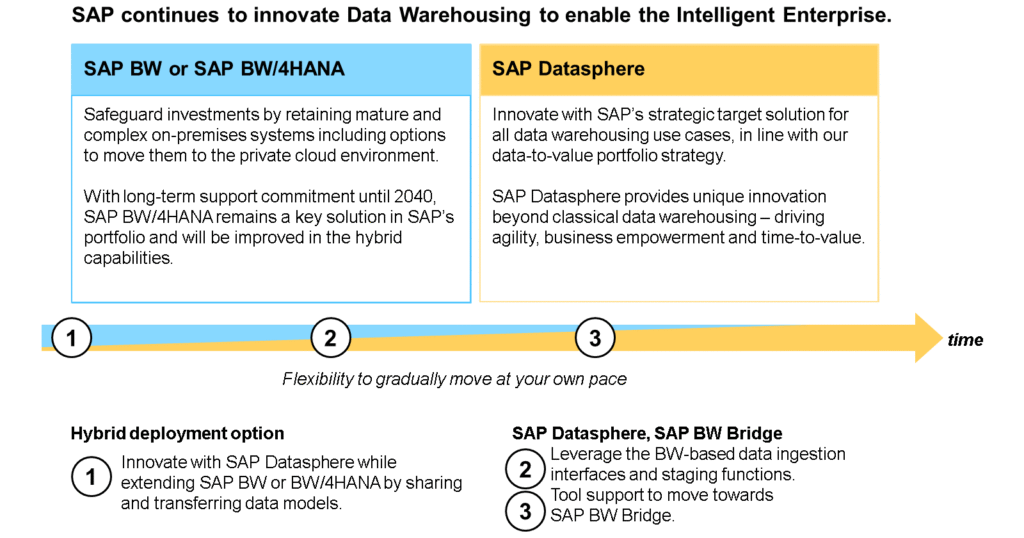
SAP’s data warehousing strategy emphasizes flexibility, allowing customers to extend their current investments gradually at their own pace. This approach involves four steps outlined in SAP’s direction statement:
- Customers can initially safeguard investments by migrating existing scenarios to a private cloud environment.
- SAP offers hybrid scenarios that combine the strengths of SAP BW/4HANA with the innovation and self-service capabilities of SAP Datasphere.
- With the introduction of the SAP BW Bridge for SAP Datasphere, organizations can reuse standard extractors and leverage SAP’s business content to stage data for sharing with SAP Datasphere.
- Finally, SAP provides tool support for migrating SAP BW 7.x and SAP BW/4HANA applications to the SAP BW Bridge incrementally.
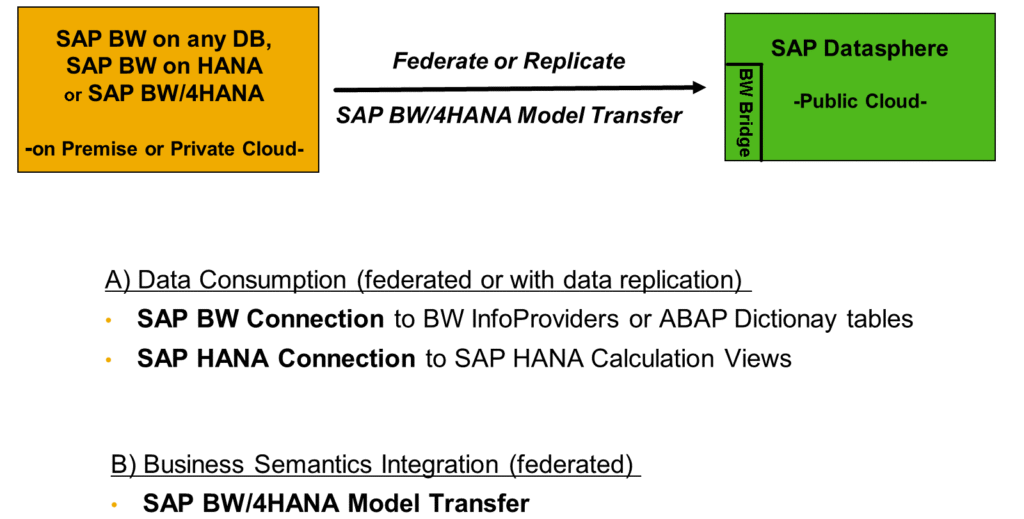
SAP doesn’t treat its Data Warehouse approaches as separate entities but SAP emphasizes integrating them seamlessly. Specifically, SAP prioritizes options for interoperability between SAP BW/4HANA’s application-driven methods and SAP HANA data models. This integration relies on external SAP HANA Views created from InfoProviders and integration pathways for SAP HANA components within SAP BW/4HANA. Here are the provided integration options:
- SAP BW Connection to InfoProviders, InfoObject Characteristics and Queries
- SAP HANA Connection to database tables or SAP HANA Calculation Views
Conclusion
In conclusion, SAP’s data warehousing strategy demonstrates a commitment to adaptability and innovation, as highlighted by the introduction of SAP Datasphere and the evolution of SAP BW/4HANA. With a focus on integration and interoperability, SAP ensures that customers can seamlessly extend their existing investments and embrace new capabilities at their own pace. By providing flexible options for managing, integrating, and operating data, SAP empowers organizations to leverage the full potential of their data assets while safeguarding their investments for the future.
When we look at the page that opens, we first see the “General Data” section where the fields required for data entry are filled in. Both mandatory and non-mandatory fields can be filled in this section. In the Global parameter, some previously determined values appear to be inherited.
When we look at the mandatory fields in the new journal entry application for company-level entries, we see the following:
- Document Type
- Posting Period
- Fiscal Year
- Consolidation Unit
An additional mandatory field for group-level entries:
- Primary Consolidation Group.
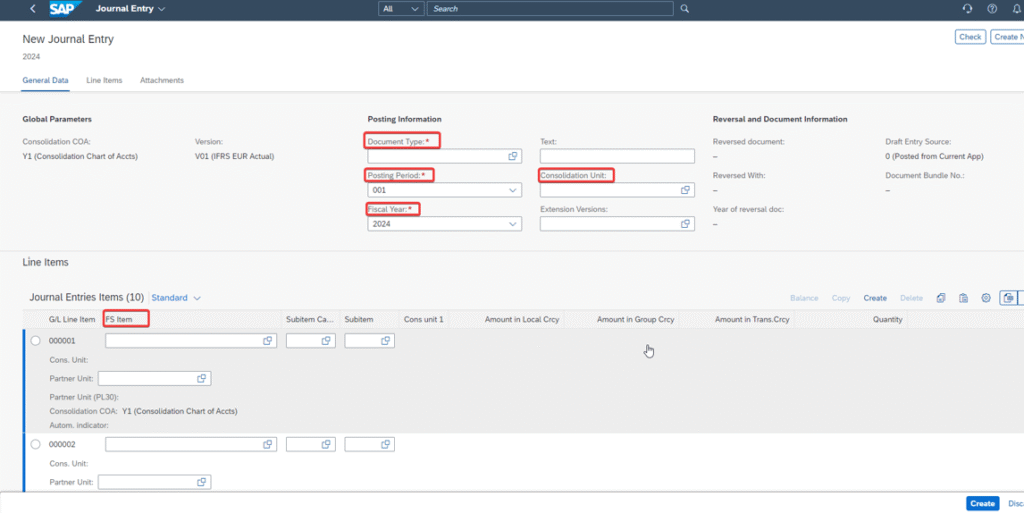
In order to test the suitability of the entered data for the system, the “check” button on the top right after data entry is used. If no error is received by the system, the relevant data is sent to SAP with the “create” button at the bottom right.
Conclusion
In conclusion, manual journal functionality is indispensable within consolidation tools like SAP Group Reporting. With features like the “Post Group Journal Entries” application, SAP Group Reporting offers robust tools for finance teams to input, track, and manage their consolidation-relevant adjustments effectively, thereby enhancing the overall efficiency and accuracy of the reporting process of the SAP Group Reporting tool.




